Individually, we own thousands of pieces of data in the form of images, audio files and documents. They all have to be stored somewhere and luckily for us, that somewhere is the cloud.
However, imagine if the cloud no longer existed. How much space would we need to store our thousands of files worth of data in a physical form? We worked out the average size of a photo, CD case, and A4 paper document to calculate the space required to store an average person’s data in real life. We then compared this data to some of the world’s most famous landmarks to visualize the scale of our results.
Here’s what our data told us…
How much storage do we actually use?
The average person stores 500GB of data in their personal cloud storage. Unsurprisingly, photo, and image files take up the majority of our storage, using 46%. To put this into perspective, this is equivalent to 137,237 photos for just one person!
When it comes to text documents, the average person stores 129GB of these in the cloud, that’s 26% of their overall storage. Every 1GB of data equates to 75,000 pages, meaning the average person stores the equivalent of 9,648,750 pieces of paper in their cloud storage.
The remaining 6% of our storage is used to keep all of our music and audio files safe. The average individual holds up to 28.7GB of music on the cloud, which is equivalent to 6,601 songs or 943 albums!
If all of that data was physical photos, CDs, and pieces of paper, and we stacked it all up, the height of one person’s media would reach 1000m. Let’s compare this data visually to some of the world’s most famous landmarks to highlight just how significant this amount of storage is…
One person’s cloud data is three times the size of the Eiffel Tower
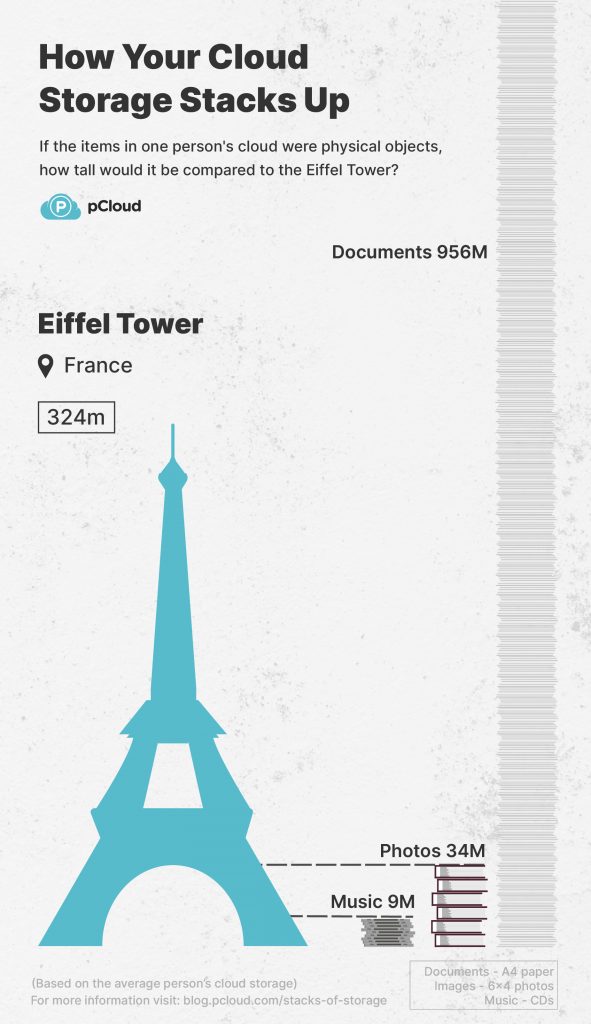
France – Eiffel Tower
France’s most famous landmark, the Eiffel Tower stands at a height of 324m. If an individual’s data was stacked up, that stack would be 3 times the height of the Eiffel Tower! Photos would account for 11% of the Eiffel Tower’s height, CDs 3% and documents an astonishing 295%. Imagine storing stacks of paper taller than the Eiffel Tower in your home.

Italy – Leaning Tower of Pisa
In Italy, the Leaning Tower of Pisa stands at 55.86m tall, meaning a single person’s data would be 18 times the height of this iconic landmark! One person’s photos alone would make up 62% of this landmark’s height. CDs would make up 17%, and documents would be a whopping 17 times its size.
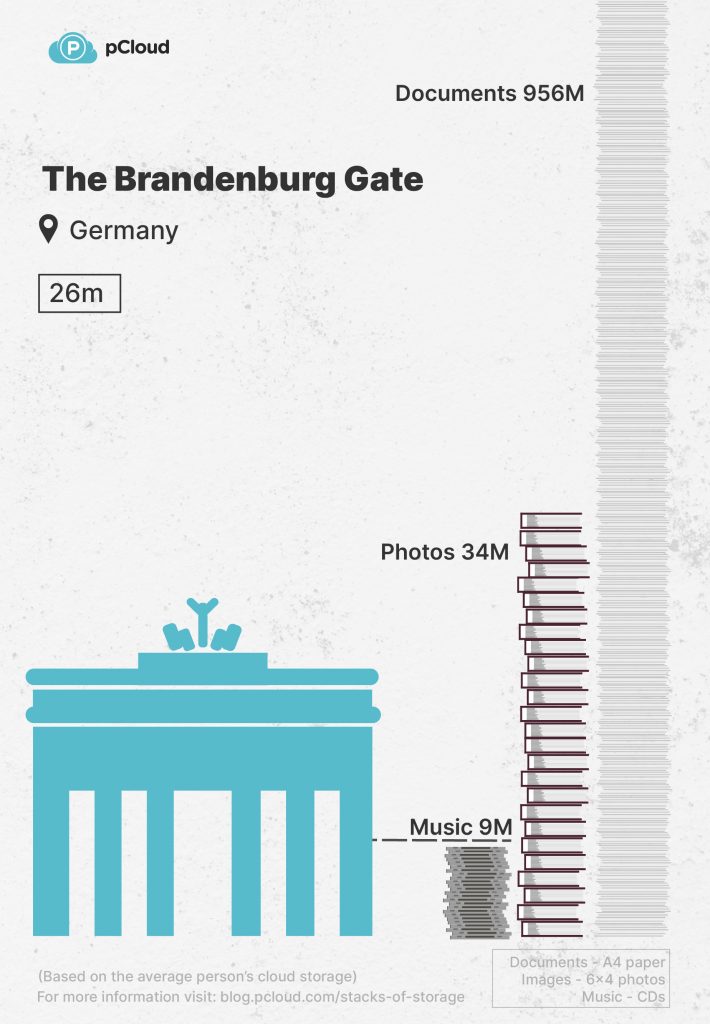
Germany – Brandenburg Gate
Brandenburg Gate in Germany is only 26m tall, making it the smallest landmark used in this research. Due to its smaller structure, an individual’s data would sky rocket above this landmark. One individual’s photos alone would be 1.3 times its height and documents would be over 36 times taller!
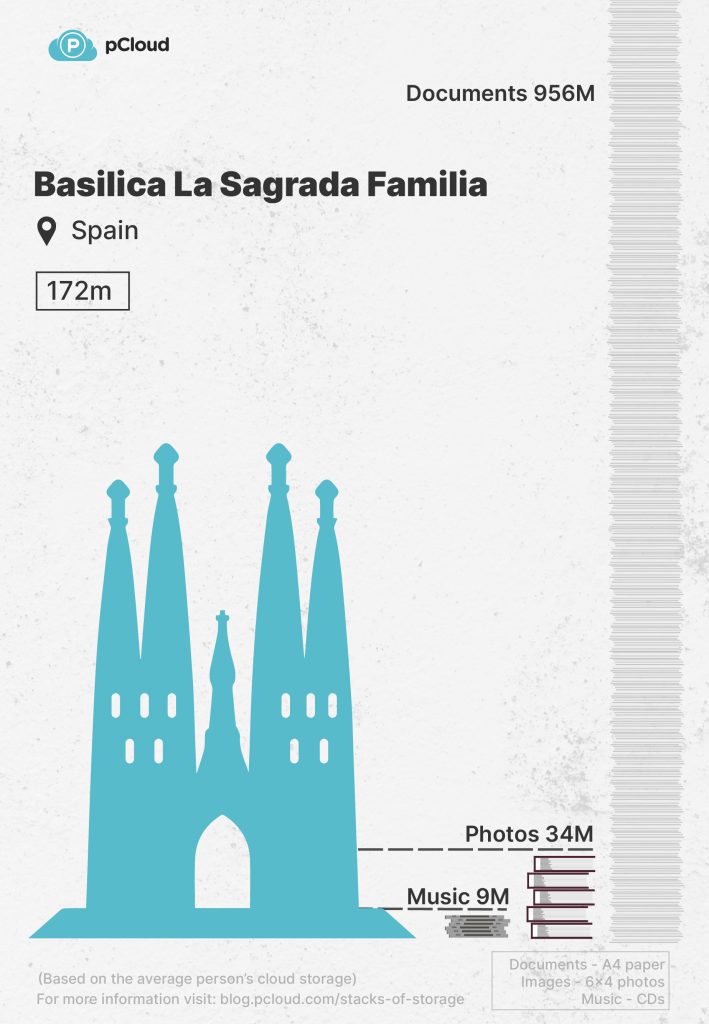
Spain – Basilica La Sagrada Familia
In Spain, the Basilica La Sagrada Familia stands at 172m tall. If we were to compare the physical equivalent of one person’s data to this landmark, photos would stack up to just under a quarter of its height and documents would tower over it by almost 6 times!
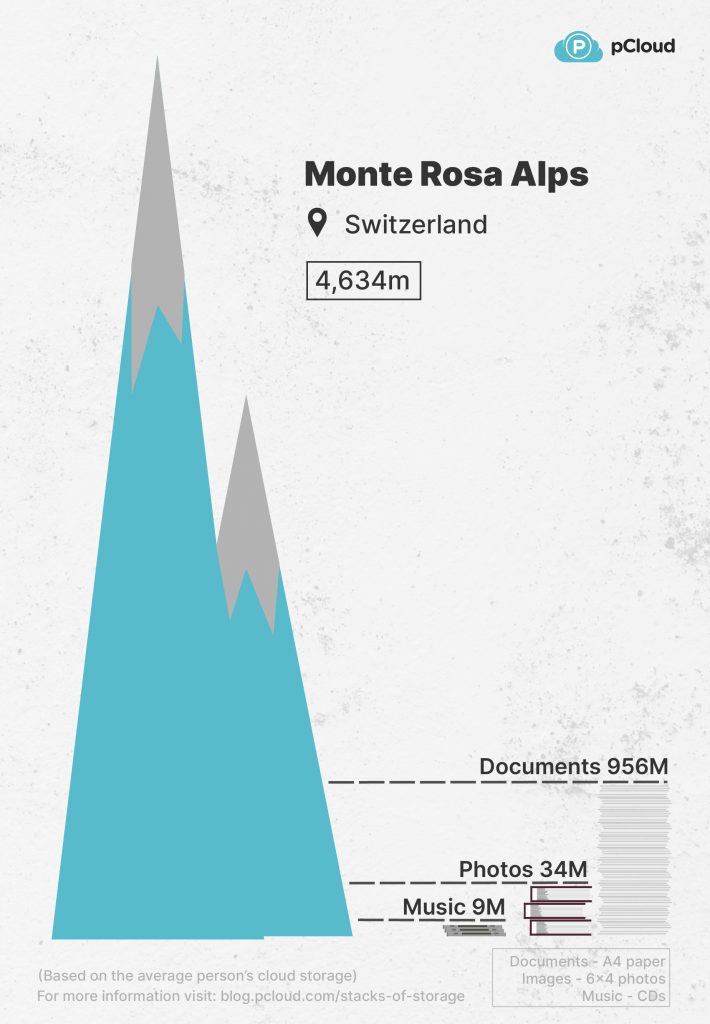
Switzerland – Monte Rosa Alps
Located in the eastern Pennine Alps, the Swiss mountain, Monte Rosa stands at 4,634m. As the largest structure in this study you might think a single person’s cloud storage would pale in insignificance. But if an individual’s photos, CDs and documents were stacked on top of one another the tower would be just under a quarter of the mountain’s height!

Netherlands – Rijksmuseum
The Rijksmuseum in the Netherlands stands at 53m tall. If we were to stack an average person’s photos on top of one another, it would cover 66% of the building’s height! CDs would cover 18% and documents would tower over the landmark at 18 times its height.
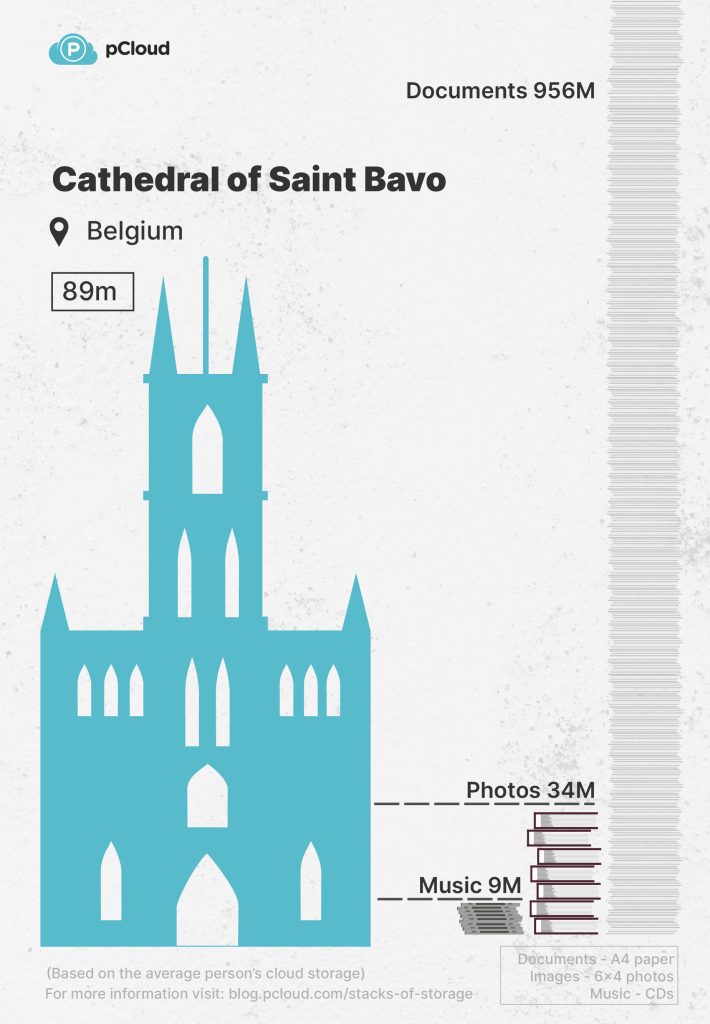
Belgium – Cathedral of Saint Bavo
This gothic cathedral located in Belgium is 89m tall. An average person’s photos and CDs would stack up to halfway against this landmark. Documents alone would tower above this historic building at 11 times its height.
The environmental impact: A single person’s documents equal 965 trees

The worrying thing is if the cloud didn’t exist, consider how much paper and plastic would be needed to make physical copies of all our data.
A single person stores, on average, 9,648,750 pages of electronic documents. If we were to print all of these out, 965 trees would have to be cut down for just one person! To print the documents of the population of Europe, 715 billion trees would have to be cut down – this is nearly the equivalent of chopping down the entire Amazon rainforest twice over!
Similarly, if a single person owns, on average, 137,236 photos, 13.7 more trees would have to be cut down to convert these photos into physical copies. Therefore, roughly 10 billion more trees would have to be cut down for the whole of Europe to enjoy their photos as physical copies.
To physically store an average person’s music storage, 943 plastic CDs would have to be used. More shockingly, Europe’s entire CD collection would cover 174,000 football pitches in plastic CD cases, most likely ending up in our oceans and landfill sites as plastic waste. The make-up of CDs means they’re very difficult to dispose of, and would likely stay intact for hundreds of years to come.
Looking to safely secure your data?
When storing your data in the cloud it’s important to ensure it’s safe. Whether you’re looking to store files for personal, family or business reasons, we are Europe’s most secure cloud storage so you can store, share and access all your files using just one simple platform, anywhere you go.
Methodology
We took the average amount of data one person holds in their cloud storage, broken down by file type. We calculated how many physical copies of each media type that cloud storage is equivalent to and visualized it against the height of famous landmarks.
Sources:
Average storage amount per person was supplied by pCloud.
Number of CDs: 1GB holds approximately 230 songs, an album is typically seven songs long so 1GB holds 32.85 CDs
Number of photos: 1GB holds approximately 595 photos in standard resolution
Number of documents: 1GB holds approximately 75,000 pages of documents
Dimensions of a photo, CD and A4 paper were taken from actual measurements and the height of each landmark was taken from the relevant tourist information sites.